
Why Bengaluru is now a beacon of culture – India’s Silicon Valley has seen a boom in creativity across art, music, theatre and food
- Institutions like the Museum of Art and Photography and the Indian Music Experience have turned Bengaluru into one of India’s most vibrant cultural cities
- Validation has come from the World Cities Culture Forum: Bengaluru is the only Indian city to have been invited to join the group, which it did in 2023
Bengaluru is South African comedian Trevor Noah’s favourite punchline. In September 2023 he landed in the Indian city, got stuck in unusually horrendous traffic, arrived late to a badly set up auditorium and cancelled his shows.
Ever since, Bengaluru – formerly known as Bangalore – has been fodder for his comedy. But the fact he chose to perform in the city, along with Delhi and Mumbai, in the first place – and why his promises to return are so earnest – speaks volumes.
Known by many nicknames – “India’s Silicon Valley”, “pensioners’ paradise”, “garden city”, “beer capital” – Bengaluru is now emerging as one of India’s most vibrant cultural cities, where performers of all types want to stop.
The city was long seen culture-wise as little more than a gateway to the heritage sites of Mysore and Hampi. But that is changing as private institutions spearhead a boom in creativity and inclusivity, across art, music, theatre and food.
Inside India’s beautiful district of the dead, now among its finest attractions
Validation has come from the World Cities Culture Forum: Bengaluru is the only Indian city to have been invited to join the group of “global cities sharing a belief in the importance of culture”, which it did in 2023.
Perhaps the most significant development was the opening of the Museum of Art and Photography (MAP) in February 2023.
Spread over five floors and 44,000 square feet (4,090 square metres) of a shiny cuboid building in the heart of the city, the museum contains more than 60,000 sculptures, paintings, photographs, textile items, design products and craft objects.
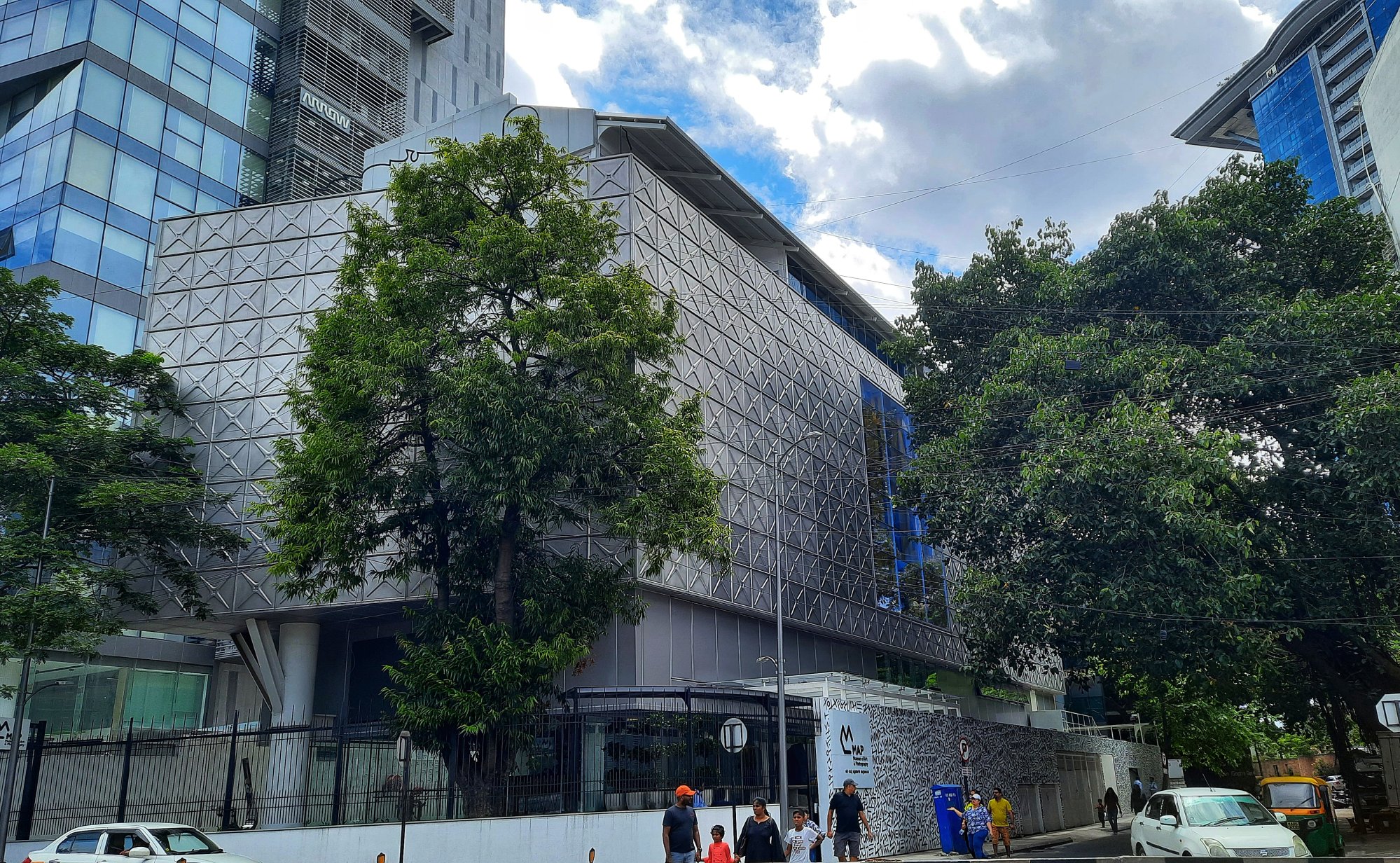
As well as four galleries, MAP has a public library on Indian art and culture, a conservation laboratory and an academic wing.
“The idea is to take art into the midst of the community, to change the kind of connection they have with art and the way they experience art,” says museum director Kamini Sawhney.
“MAP wants to change the whole museum-going experience by … making it inclusive and accessible, an exciting and cool place to hang out.”
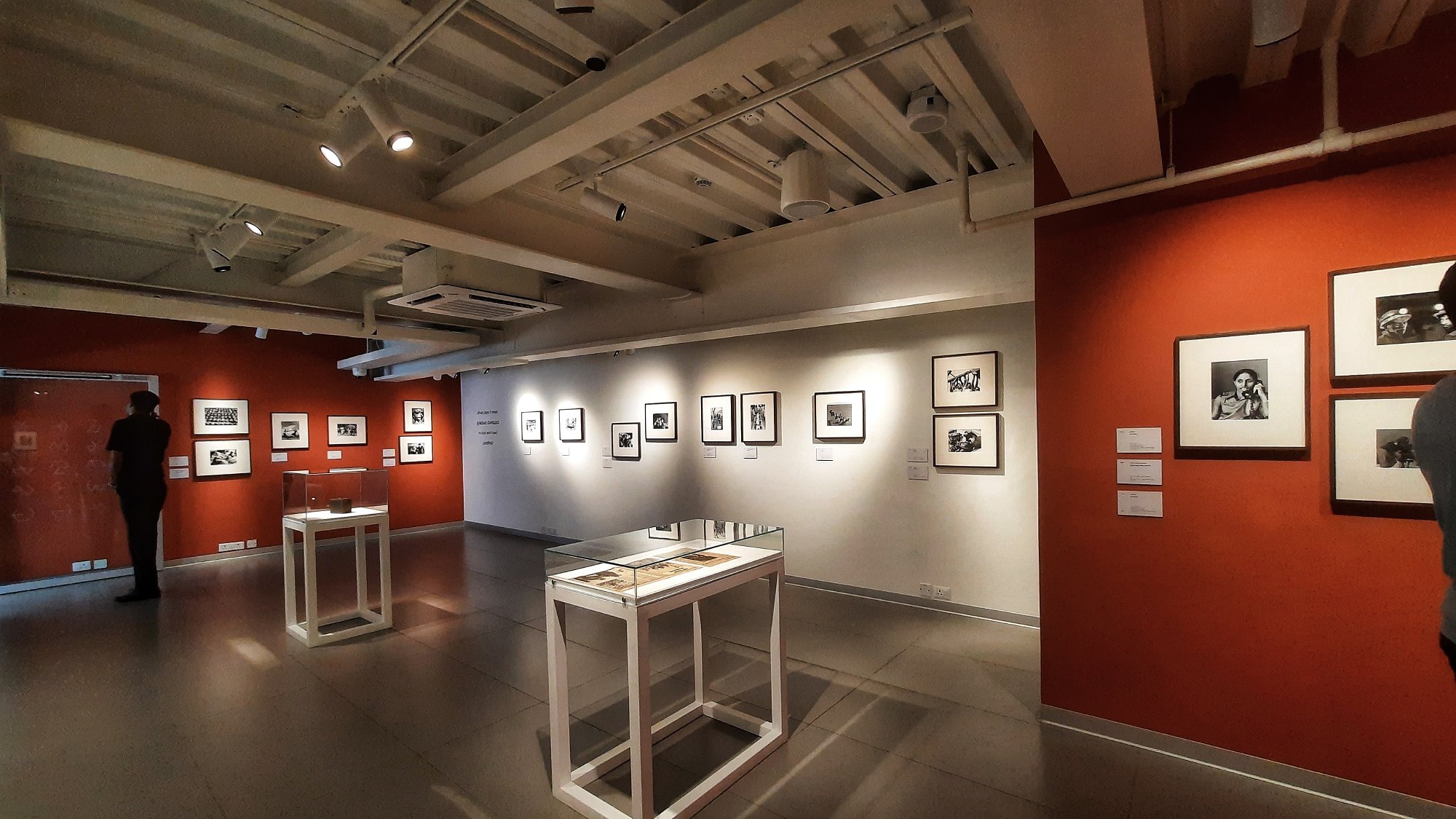
The Indian Music Experience, opened in 2019, is housed in a large building towards the city’s south that is all pleasing colour combinations, graceful lines and sensible flow. Across several galleries, the country’s only interactive music museum traces the roots of domestic classical music, both Carnatic and Hindustani, but also references folk, cinema, Indian pop, metal and jazz.
A double-height display of more than 100 Indian instruments is arresting, but more popular are the attraction’s interactive aspects.
An outdoor sound garden fronting the museum has a collection of stone, wooden and metal installations. Visitors are encouraged to tap, rub or hit each to produce distinct sounds and sound progressions. Inside, almost every exhibit has a listening station; consoles make it possible for visitors to create their own music.

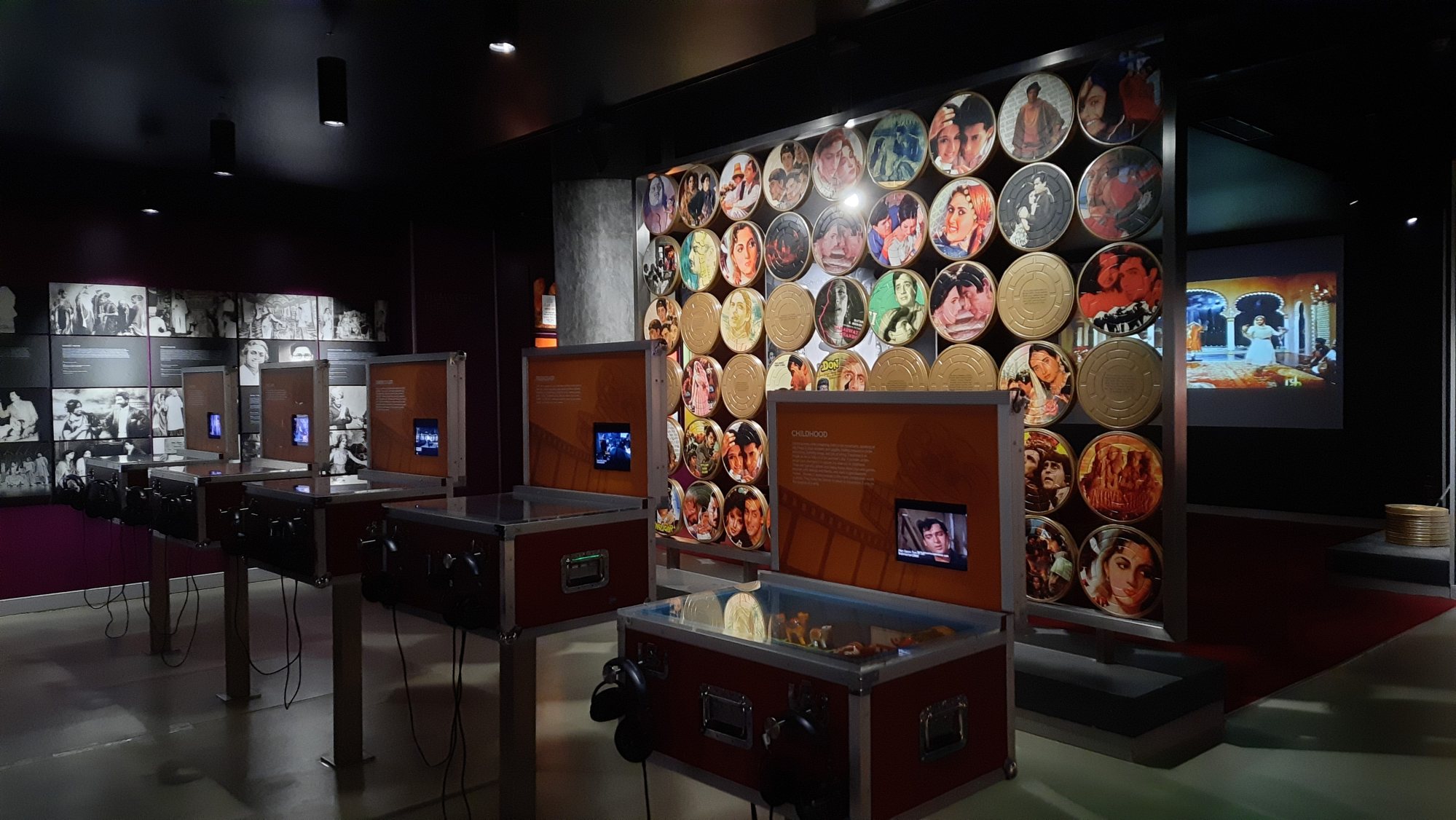
“It is indeed a unique experience, one that is educative, interactive and truly immersive,” says Kedar Nayak, founder of the Bengaluru-based Octavium Music Academy and a frequent visitor to the museum and the concerts it hosts. “It can certainly motivate people to explore their own musicality and enrich lives.”
Close to popular Lalbagh park, The Courtyard is a covered community space known mostly for its innovative cuisine. In one corner, for instance, is Naru Noodle Bar, a ramen restaurant that has 20 seats that are always booked out within seconds of being offered online.
Food pop-ups and themed events helmed by roving chefs are hosted in the vast open space. Sustainable-food demonstrations take place in the rooftop conservatory, with its glass walls and roof, which also hosts Movie Under the Stars evenings, a coming together of a cinema classic and a three-course meal by a guest chef.
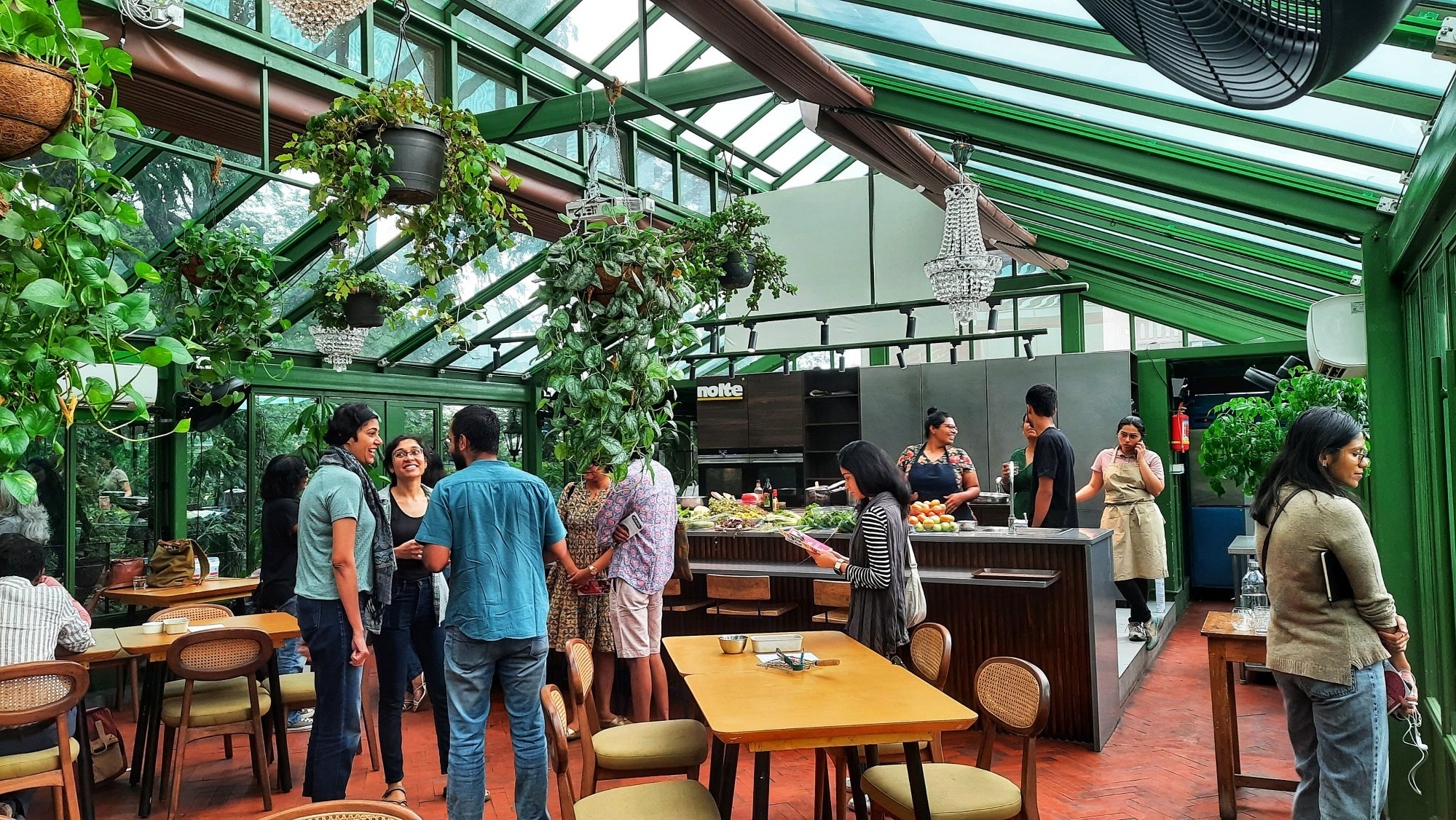
“We’re all about cultivating a lively and exhilarating community where people can dive headfirst into their quirkiest interests,” says Ipsa Saini, head of sales and communications for The Courtyard.
“Our space is like a playground both for our audience and creators, offering the setting for experimentation in art, entertainment and food. Imagine it as a whimsical wonderland where anyone can stroll in and stumble upon kindred spirits.”
In a part-residential, part-industrial area to the north of the city is perhaps its most bohemian space. Housed inside a 20,000 square foot former warehouse, the Bangalore Creative Circus has an interior created entirely out of scrap, and furniture made of recycled material.
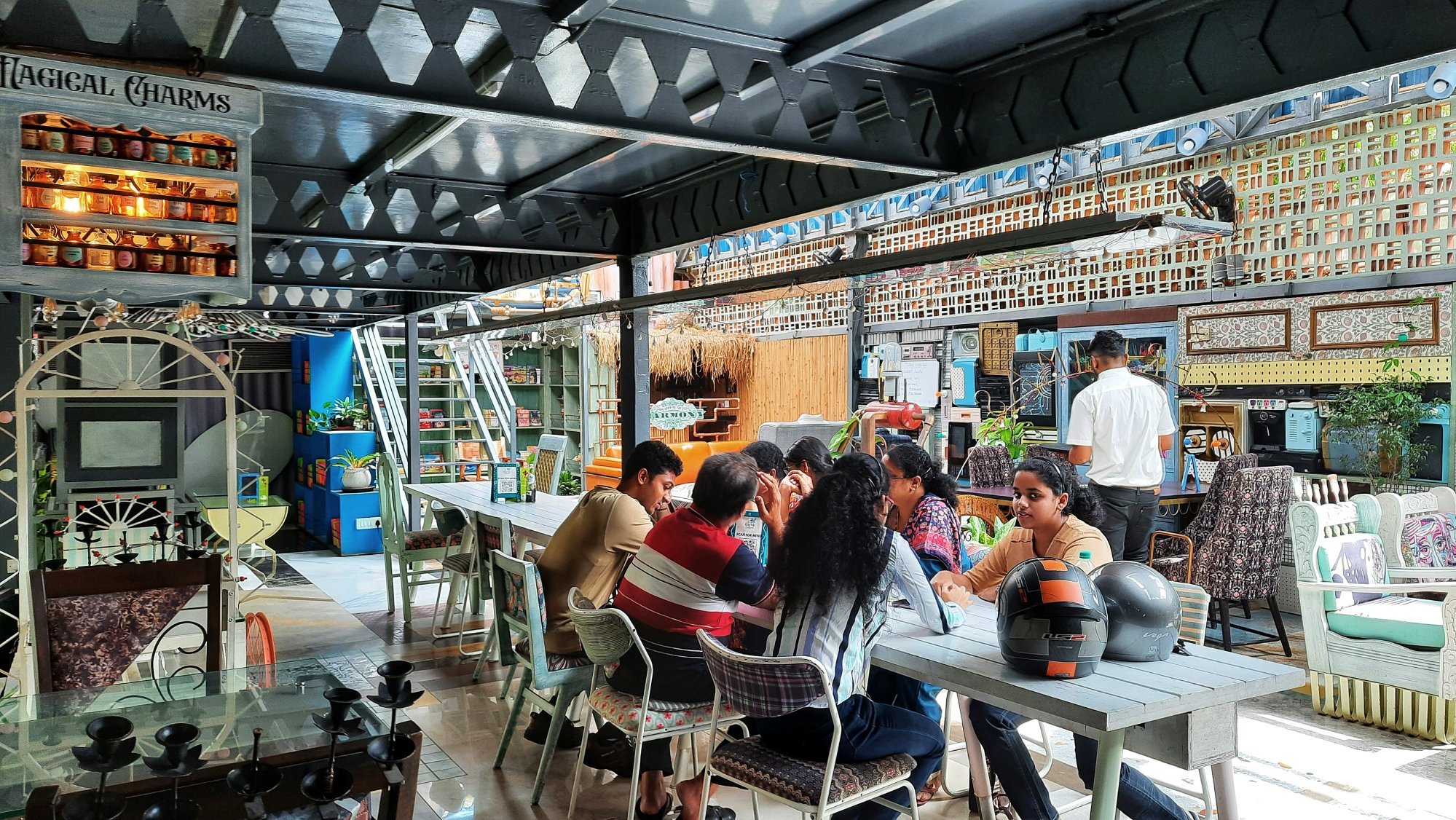
Part farmers’ market, upcyclers’ meeting space, documentary film cinema and gallery, it is a hub for artists, scientists, chefs and gardeners, but also dreamers.
Just over two years old, the complex, which is divided into distinct sections – Makerspace, Art Gallery, Urban Farms, Central Events and a restaurant – is possibly the only such demonstrative space in India.
“It thrives on innovation, experimentation and creativity, with the aim of making sustainability tangible, accessible and fun,” says co-founder Manisha Vinod.
“Modelled as an ‘urban living lab’, it is a platform where businesses, leaders and change-makers can collaborate, experiment, innovate and showcase. Equally, it is a space where consumers can find access to knowledge, solutions, services and community, all under one roof.”

The Bangalore International Centre (BIC), which is described as a “spa for the mind and soul”, is housed in a swish, towering, corporate-looking building close to the eastern district of Indiranagar. Formed in 2005 as a small forum elsewhere, BIC moved into its current home in 2019 and became a hub of intellectualism.
“[Bengaluru] deserves an institution that … facilitates open dialogue and stimulates the senses,” says V Ravichandar, BIC’s honorary director.
“We live in polarised times. There is a need for well-curated, balanced programming that informs and respects the audience’s intelligence.”
India’s cruise industry sees buoyant future, but blue economy not so green
The mix is eclectic – in 2023, BIC held more than 325 events, including conversations across diverse subjects (five Nobel laureates were among speakers); exhibitions and film screenings; and music, dance and theatre performances.
About 12km (seven miles) to the southwest, in the leafy lanes of the JP Nagar district, stands a beautiful and contemporary theatre space, Ranga Shankara, the outlier among Bengaluru’s most cultured venues, being almost two decades old.
Built by actress Arundhati Nag in memory of her husband, the theatre and film actor Shankar Nag, who died in a road accident in 1990, the acoustically designed space was more than a decade in the making.
“For someone to do a project like this, you either have to have the money or the madness,” Nag says of the space. “I didn’t have the money but I had the madness.”

A space for performers but also other creative types, Ranga Shankara is kept relevant by offering a combination of rootedness and constant innovation.
Its calendar has such an eclectic mix of events – from mythological reinterpretations to commentary on current events; from novel classical collaborations to orchestral renditions; from children’s theatre to artistic conversations – there’s rarely a dull day.
“It is a journey of constant learning,” Nag says – much like newly cultural Bengaluru itself.

